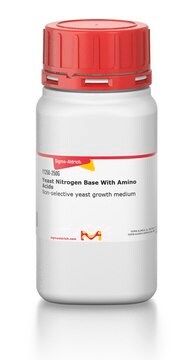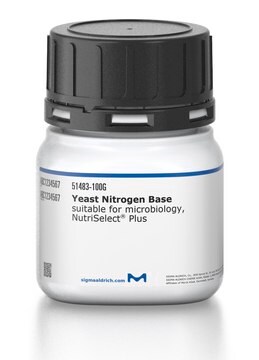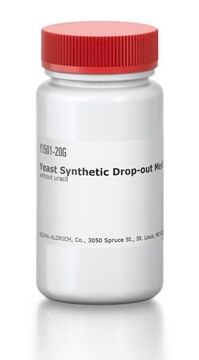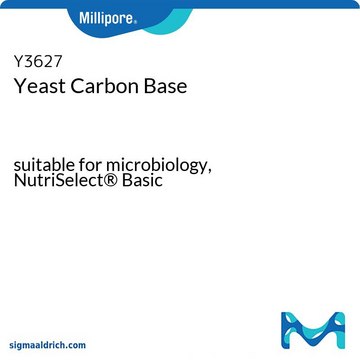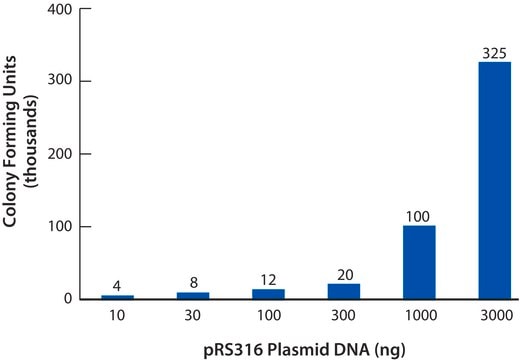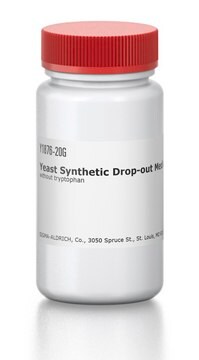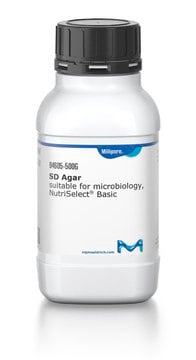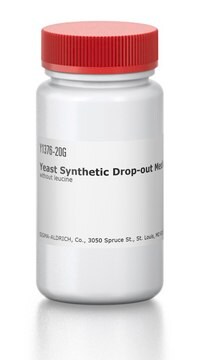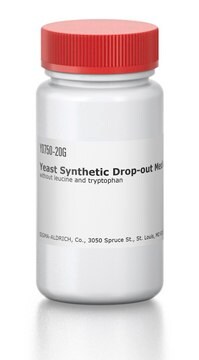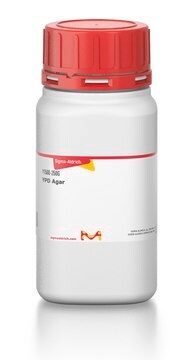Y1251
Yeast Nitrogen Base Without Amino Acids and Ammonium Sulfate
suitable for microbiology, NutriSelect® Basic
About This Item
Produtos recomendados
esterilidade
non-sterile
Formulário
powder
embalagem
poly bottle of 1 kg
poly bottle of 500 g
fabricante/nome comercial
NutriSelect® Basic
solubilidade
water: soluble 67 mg/mL
aplicação(ões)
clinical testing
food and beverages
life science and biopharma
microbiology
adequação
Candida spp.
Pichia spp.
Saccharomyces spp.
Zygosaccharomyces spp.
molds
yeasts
Descrição geral
Aplicação
Componentes
Biotin, 2 μg/L
Calcium pantothenate, 400 μg/L
Folic acid, 2 μg/L
Niacin, 400 μg/L
p-Aminobenzoic acid, 200 μg/L
Pyridoxine HCl, 400 μg/L
Riboflavin, 200 μg/L
Thiamine HCl, 400 μg/L
Inositol, 2 mg/L
Boric acid, 500 μg/L
Copper sulfate, 40 μg/L
Potassium iodide, 100 μg/L
Ferric chloride, 200 μg/L
Manganese sulfate, 400 μg/L
Sodium molybdate, 200 μg/L
Zinc sulfate, 400 μg/L
Potassium phosphate monobasic, 1 g/L
Magnesium sulfate, 0.5 g/L
Sodium chloride, 0.1 g/L
Calcium chloride, 0.1 g/L
Nota de preparo
- Prepare a 10× stock solution by suspending 1.7 g of yeast nitrogen base without amino acids and ammonium sulfate in 100 ml of cold distilled water. Include desired nitrogen and carbon sources.
- Warm if necessary to solubilize and sterilize by filtration.
- Store 10× stock solution at 2-8°C. To use, dilute 1:10 with sterile distilled water under aspetic conditions.
Informações legais
Exoneração de responsabilidade
Somente componentes do kit
- KH2PO4 1 g/L
- MgSO4 .5 g/L
- NaCl .1 g/L
- CaCl2 .1 g/L
- Inositol 2 mg/L
Código de classe de armazenamento
11 - Combustible Solids
Classe de risco de água (WGK)
WGK 3
Ponto de fulgor (°F)
Not applicable
Ponto de fulgor (°C)
Not applicable
Equipamento de proteção individual
Eyeshields, Gloves, type N95 (US)
Escolha uma das versões mais recentes:
Já possui este produto?
Encontre a documentação dos produtos que você adquiriu recentemente na biblioteca de documentos.
Os clientes também visualizaram
Artigos
Traditional methods are based morphology, staining methods, enzyme reactions (metabolism) and diverse media.
Nossa equipe de cientistas tem experiência em todas as áreas de pesquisa, incluindo Life Sciences, ciência de materiais, síntese química, cromatografia, química analítica e muitas outras.
Entre em contato com a assistência técnica
